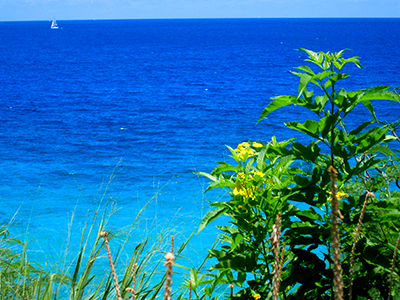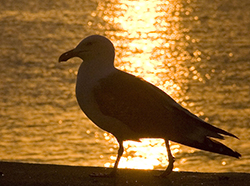When something is off balance, you notice right away: too much coriander in the curry, the picture hanging over the fireplace is crooked, or the volume in the left speaker is too low. You adjust and like fixing a wobbly table, you mentally stack sugar packets under a leg to set things right.
We learned to balance our seesaws, bicycles and check books but sometimes balance doesn’t have to mean equal. Look at the photograph and use your finger to cover the sailboat in the upper left corner. Without that tiny speck of white, the much more massive plants and flowers look off balance.
On a recent trip to the British Virgin Islands, I heard a surf instructor tell his student: “balance is not always gained by standing in the middle of the board.” Shortly later, someone handed me a Zen card with the words:
“The center is not always the point of balance”
And all of a sudden a lot of things made sense. Achieving balance does not require equal, opposite or symmetrical forces. Leverage can be used to balance the small with the large. Sometimes one cute habanero pepper can balance an entire pot of gumbo or a holiday weekend can balance a five day work week.
Equilibrium spans many disciplines but for art – shapes, colors and lines are arranged to produce a whole that is harmonious and pleasing. Talking about balance got Henri Matisse in big trouble when he said: “What I dream of is an art of balance, of purity and serenity devoid of troubling or depressing subject matter – a soothing, calming influence on the mind, rather like a good armchair which provides relaxation from physical fatigue.” The critics banished him for creating “decorations” instead of serious artwork. Who would want some of those decorations now?
Sometimes we just have to step away from the middle to find our true balance. What do you think?


